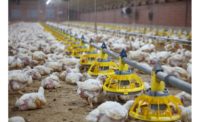The return of the U.S. in many global poultry markets is shaking up global trade streams, with other exporters starting to defend their market share via price concessions, according to Rabobank’s Global Poultry Quarterly Q2 report.
“This is affecting margins for companies highly exposed to trade, in countries like Brazil, Argentina, Thailand and Japan“, says Animal Protein Senior Analyst Nan-Dirk Mulder. “We believe this situation will continue, with expected supply shortages in Asia and Mexico offsetting some of the negative impacts of price concessions. Outside of these trade battles, market conditions are more favorable—in balanced markets, companies are receiving good margins.”
Good margins are currently being made by industries in many balanced markets, such as in Indonesia (after a culling program), India and South Africa (strong El Niño impact on local supply). Mexico (GPS shortage) and the EU are doing well, and the US poultry industry has recovered faster than expected. Key for these markets will to be to keep market balance, as deteriorating global market conditions can rapidly impact local market conditions.
Supply shortages in Asia are now starting to affect global markets. China has made positive margins, thanks to a 20% supply reduction of white broilers due to breeding stock trade restrictions. Other markets in Asia are expected to feel the impact in 2H 2016, and this could lead to more exports to China and South Korea, with more pressured supply from Thailand.
A highly competitive global trade is seen, due to the faster-than-expected return of the US in many international markets, after avian influenza (AI)-related trade restrictions. This is shaking up global trade streams, with Brazil and the EU aggressively defending market share via price concessions, and prices for poultry have been reduced by up to 20%. Some relief will come from better seasonal demand in Q2/Q3, rising Asian and Mexican imports, and recent FX changes.
Brazil’s struggle to balance markets will be a major factor for global performance in the coming months. Ongoing weak local and global market conditions with high feed costs will likely reduce growth from the 3.5% rate of recent months. In the past, the industry has proven that it can be disciplined, which would support recovery.
Source: Rabobank


Report Abusive Comment